Updated November 7, 2025 03:24PM
The best winter boots vary dramatically depending on the environment. Whether you’re trudging through feet of snow to collect firewood, navigating icy ski resort parking lots, or simply walking your dog on a chilly afternoon, the right set of duds makes all the difference, but you’ll need a different pair of boots for each scenario. Our test crew of seven women and five men tried 25 pairs of boots, from thick, farm-ready mucks to fashion-forward Chelseas in foul winter weather across the country. These eight picks rose to the top.
Best Winter Boots: At a Glance
Best Winter Boots Overall
Blundstone All-Terrain Thermal Chelsea Boot
Size Range: 4-14 (men’s), 6-11 (women’s)
Pros and Cons
+ Classic Chelsea boot style
+ Fully waterproof
+ Grippy Vibram soles
– Tight fit around the heel
– Hard to pull on and off
This winterized version of Blundstone’s classic Chelsea boot was an instant favorite and obvious contender for best winter boots overall. Several testers commented on how pleasantly surprised they were that these boots are truly waterproof right out of the box—not always the case with leather footwear—thanks to sealed latex seams and a special tanning process.
Minnesota-based tester Stephanie Pearson wore these all winter, through snow, ice, dirt, and slush. “They fare well in every condition I’ve tried them in, short of deep snow,” said Pearson, adding that their sleekness was a welcome contrast to the bulky boots she usually needs for winters in Duluth. The grippy Vibram outsole provides adequate traction for moderately slippery conditions like fresh snow and icy patches.
A cozy, removable sheepskin footbed and Thinsulate lining made these comfortable in freezing temps. Our testers in Santa Fe agreed that these are versatile and rugged enough to wear almost every day from November through March. “If these boots weren’t so darn warm, I’d wear them year-round,” said one. In fact, one tester did comfortably wear these boots in temperatures from 20 degrees in the dead of winter all the way up to a toasty 75 degrees on a warm spring evening in Moab, UT.
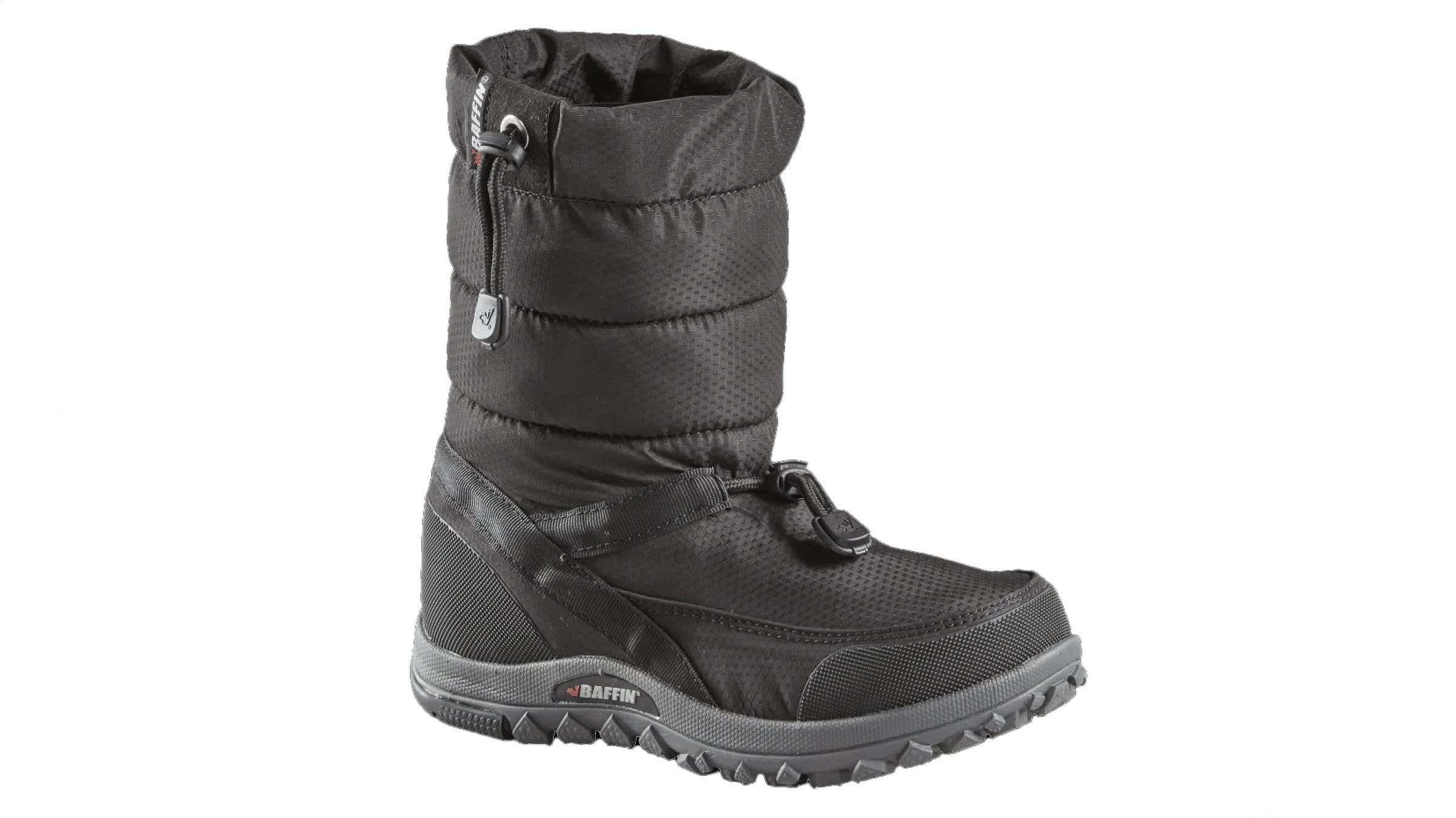
Best for Frigid Commutes
Baffin Cloud Low
Size Range: 7-14 (men’s), 6-11 (women’s)
Pros and Cons
+ Packable and lightweight for travel
+ Comfortable out of the box
+ Easy to slip on and off
– Style isn’t for everyone
This featherlight, hyper-warm boot takes the puffy slipper concept and winterizes it with a waterproof-breathable membrane, lofted synthetic insulation, and grippy, slip-resistant outsoles. Thanks to its convenient slip-on construction, comfort out of the box, superior warmth, and higher coverage for deep snow, the Cloud Low was one of the best wintor boots for our testers, especially in snowy, frigid climates.
“The convenience of this boot is unparalleled. It slips on and off incredibly easily and quickly, and it’s just the pull of a tab or two to tighten or loosen if needed,” said Salt Lake City-based mountain guide and ski instructor Ben Wu, who tested these boots in temperatures down to -15 degrees.
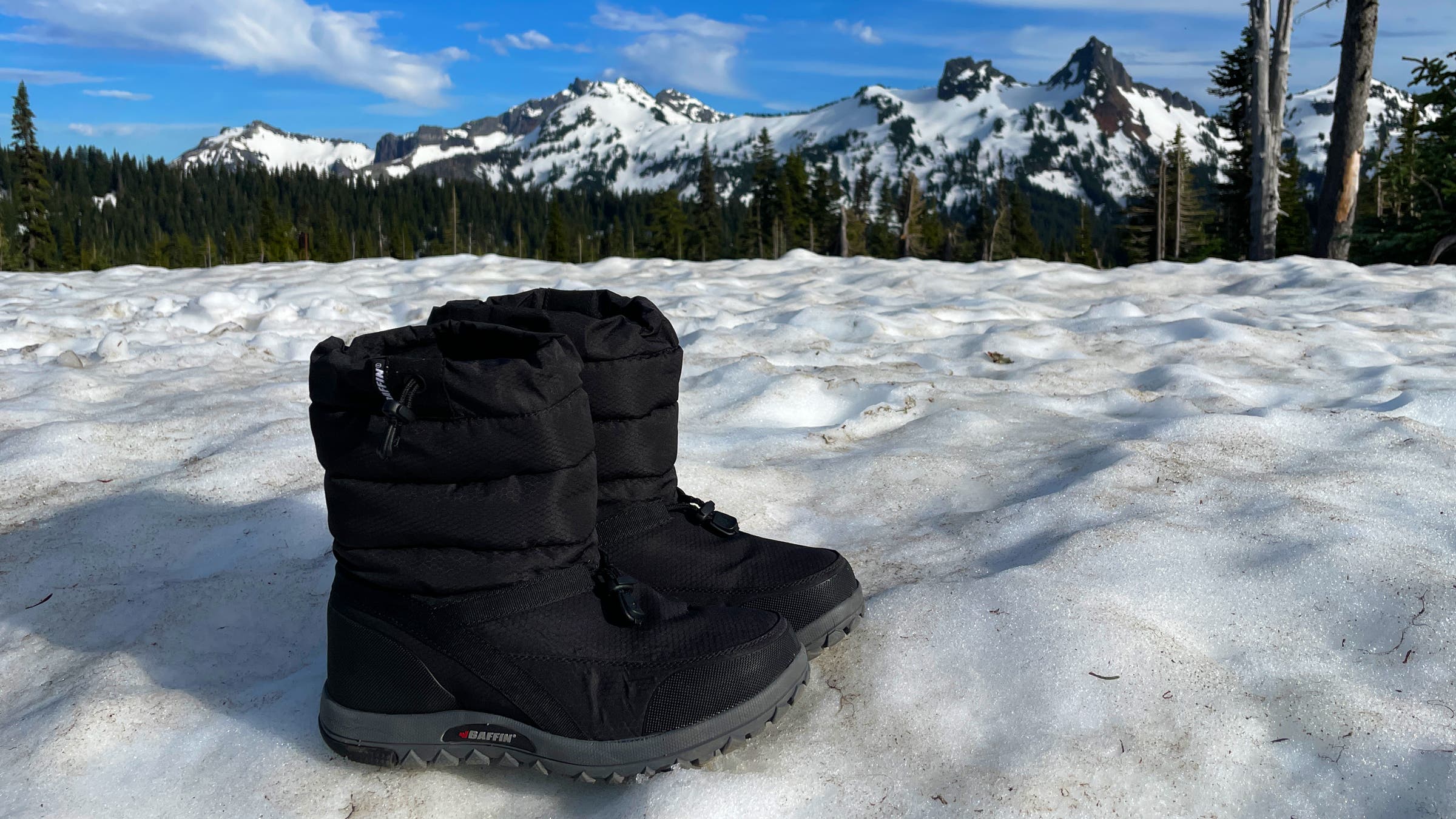
Grip was impressive: The outsole, a proprietary blend of rubber and EVA molded into a hexagonal tread pattern, proved capable on snow, ice, and mud. One tester noted she “never slipped, tripped, or got a blister,” even on an icy, singletrack path.
Our testers’ favorite attributes? The Cloud Low’s packability and warmth-to-weight ratio. At roughly 3.3 pounds per pair (women’s, size 7), this super-warm, 9-inch-high boot is one of the lightest we tested for the level of protection it provides. Two testers easily packed these boots for a backcountry skiing trip to Hokkaido, Japan where temps consistently fell down to single digits. “The boot is light, packable, and perfect for traveling. Hard to say that about other winter boots I have,” said one tester.
The only real critique from testers: Some found its aesthetic to be a bit utilitarian for everyday wear.
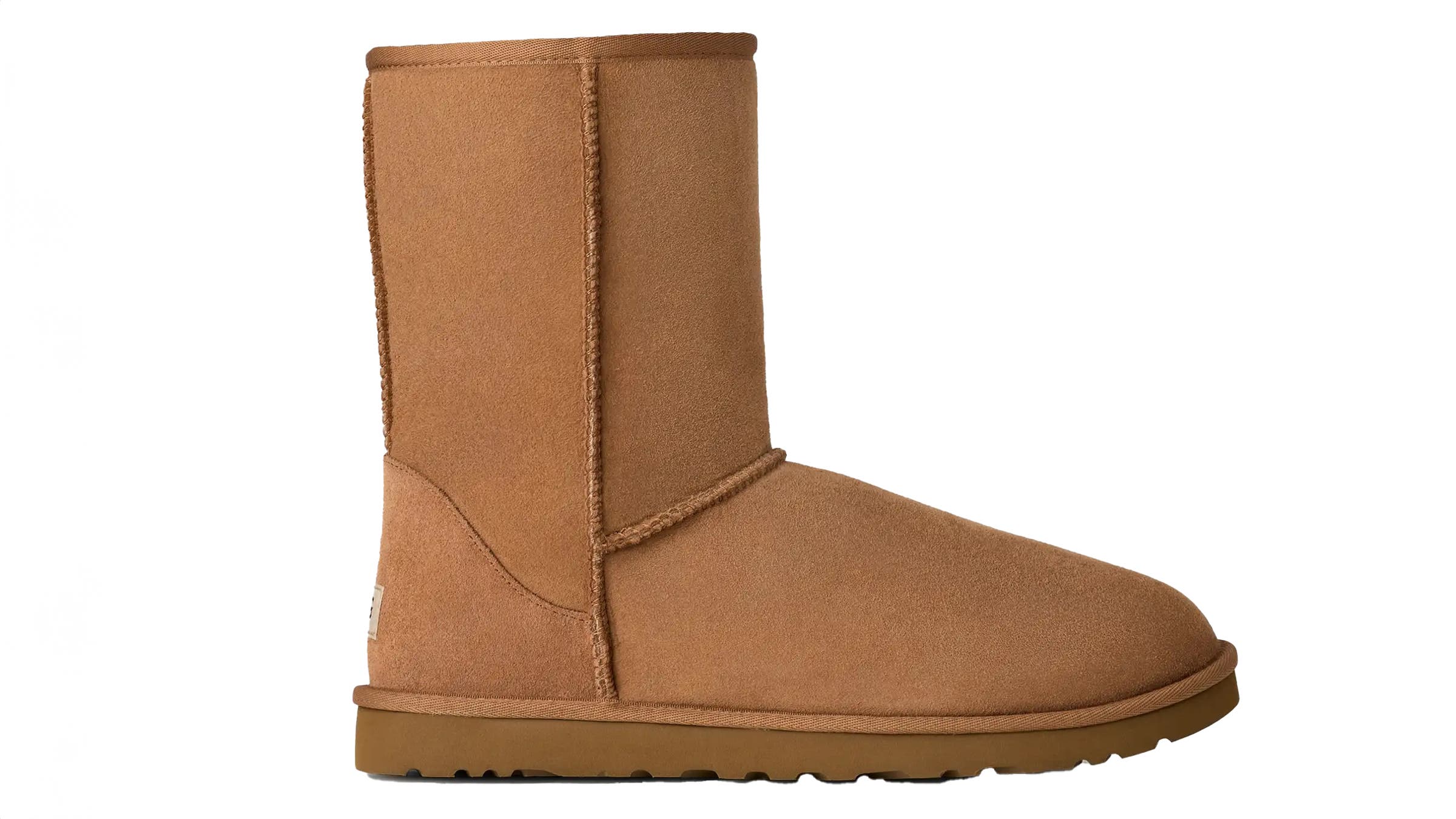
Most Comfortable Winter Boots
UGG Classic Short
Size Range: 7-18 (Men’s), 5-12 (Women’s)
Pros and Cons
+ Slipper-like comfort
+ Easy to slip on
+ Very warm
– Not waterproof
– Minimal grip
“So comfortable that I wanted to wear them in the house,” said one tester of this hygge classic. The thick, super-soft sheepskin lining wicked moisture and kept our testers’ feet comfortable and warm—with and without socks. Testers wore them down to sub-zero and single digit temperatures and didn’t have any issues with cold feet. The throwback style of UGGs was an added bonus for our testers, who wore the winter boots for errands around town, freezing dog walks, and after a long day of skiing.
This boot’s weaknesses? The EVA outsole and shallow treads are inadequate for icy conditions, deep snow, or longer walks—most of our testers found it safest sticking to dry pavement in these kicks. And then there’s the lack of waterproofing. The natural suede upper is all but guaranteed to get wet and quickly absorb water. In the classic tan color, they don’t do much to hide muddy, salty winter grime, either. Pro tip: Spray them with Nikwax waterproofing before wearing to give them a fighting chance in wet conditions.
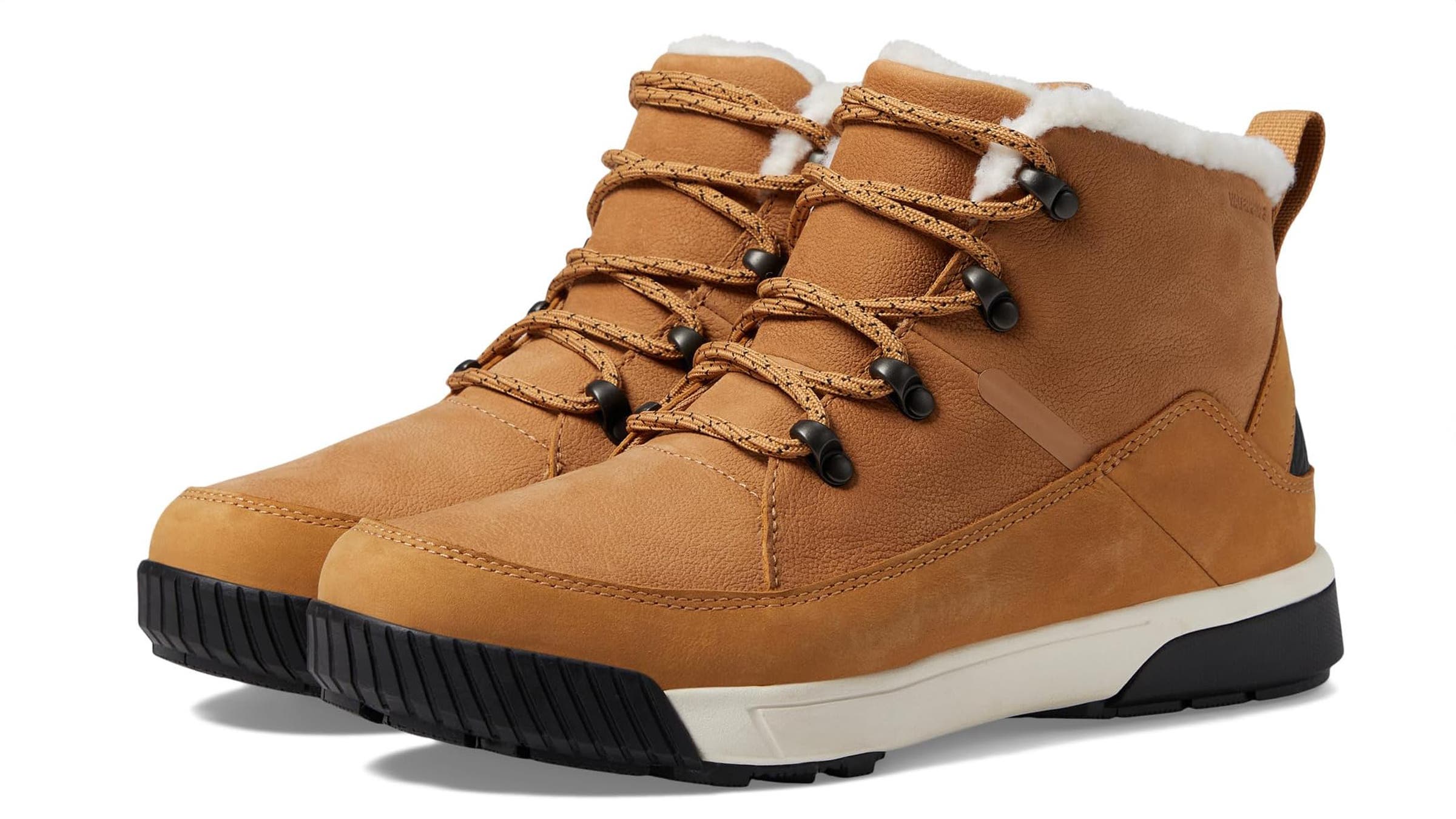
Most Stylish Women’s Boot
The North Face Sierra Mid Lace Waterproof Boots
Size Range: 5-11 (Women’s)
Pros and Cons
+ Cozy faux-fur collar
+ Super stylish
+ Warm
– Sizing a little narrow
– Not the most supportive insole for longer hikes or walks
These stylish duds strike the perfect balance between a warm, winter boot with technical materials and a genuinely cute shoe. The ankle-height style and classic black or tan colors keep the boot casual and neutral enough to complete everyday outfits, while 100 grams of recycled synthetic insulation and waterproof leather keep your feet extra cozy and dry.
The boot may be waterproof and warm, but its shallow-lugged rubber outsole is best on pavement or groomed surfaces with no more than a few inches of snow or slush; it wouldn’t be our top choice for slick surfaces. And our testers found that the molded-EVA insole lacked support they needed for hiking longer distances.
But on cold days around town, the Sierra Mids excelled. “I wore these anytime I felt like I had to complete an outfit, like going out to dinner,” said one tester. “They gave me a little boost of hygge whenever the weather was truly wintry.”
With that sleek, stylish shoe shape, however, comes a slightly narrower fit. For folks with normal or wide feet, consider sizing a half size up.

Best Men’s Boot for Outdoor Chores
Bogs Bozeman II Tall Boots
Size Range: 5-16 (Men’s)
Pros and Cons
+ Durable
+ Extremely warm
+ Waterproof and breathable
+ Stretchy inner bootie
– Overkill for casual wear
“Muck boots at their finest,” gushed naturalist and polar expedition guide Benjamin Shulman, who says these quickly replaced his previous go-to boots for working in deep snow, ice-cold water, or slushy mud. Shulman praised the way the stretchy inner liner and bio-based foam footbed cupped his heels—“no blisters in sight!”—and provided comfortable, stable underfoot support for walking long distances.
The thick rubber outsole kept testers safe from sharp rocks, and the wide-spaced lugs performed well in slush and deeper snow. While this winter boot is rated to a somewhat untestable -40 degrees, we can confirm happy toes at the zero-degree mark. And, despite the thick, five-millimeter neoprene shaft that goes all the way up the calves, they’re also easy to pull on and off thanks to handles near the cuff.
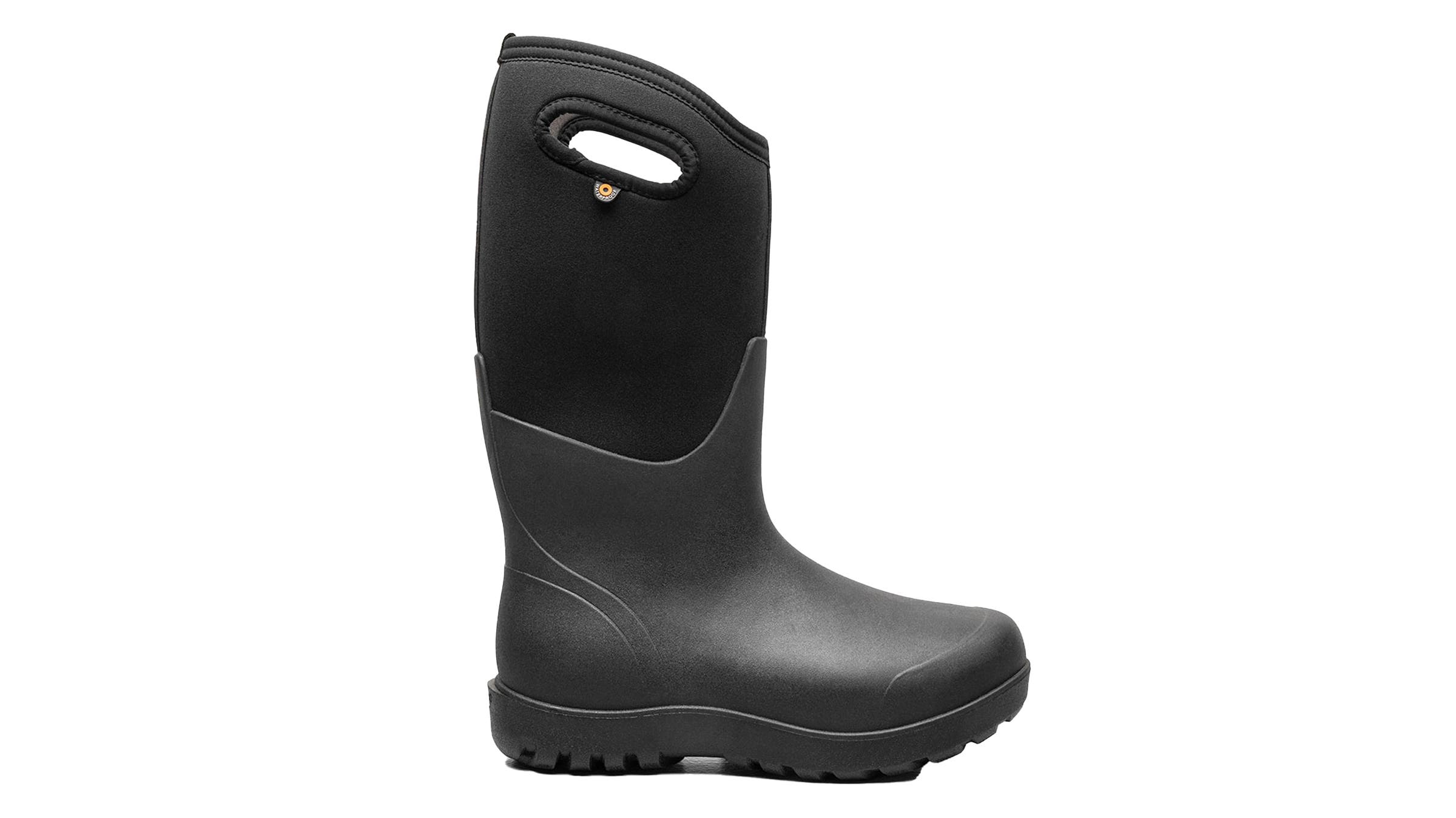
Best Women’s Boot for Outdoor Chores
Bogs Women’s Classic Seamless Tall
Size Range: 6-12 (Women’s)
Pros and Cons
+ Durable
+ Fully waterproof
+ Easy to slip on and off
+ Light for a muck-style boot
– Overkill for casual wear
“Anyone who lives in a climate with a mud season needs a pair of these,” said Minnesota-based tester Stephanie Pearson. These virtually indestructible winter boots are our go-to choice for when our other boots can’t handle the mud, dirt, salt, or slush.
The Women’s Classic Seamless Tall is a sloppy weather powerhouse, with a waterproof seamless construction (less opportunity for leaks or failure), 5.5-millimeter-thick natural rubber insulation, temperature-regulating mesh lining, and slip-resistant outsoles—all designed for a woman’s footshape. One tester found these winter boots to be quite warm and insulating on a long, five-mile walk on a blustery, 30-degree day with 6-degree windchill.
That seamless transition between the outsole and upper makes the boot extra-durable and relatively lightweight at 4.2 pounds per pair. Testers appreciated the handles at the top of the boot, which make them super easy to pull on and take off. The only real downside to the Classic Seamless Tall? It’s a little clunky—like most winter boots in this style—but still manageable for driving.
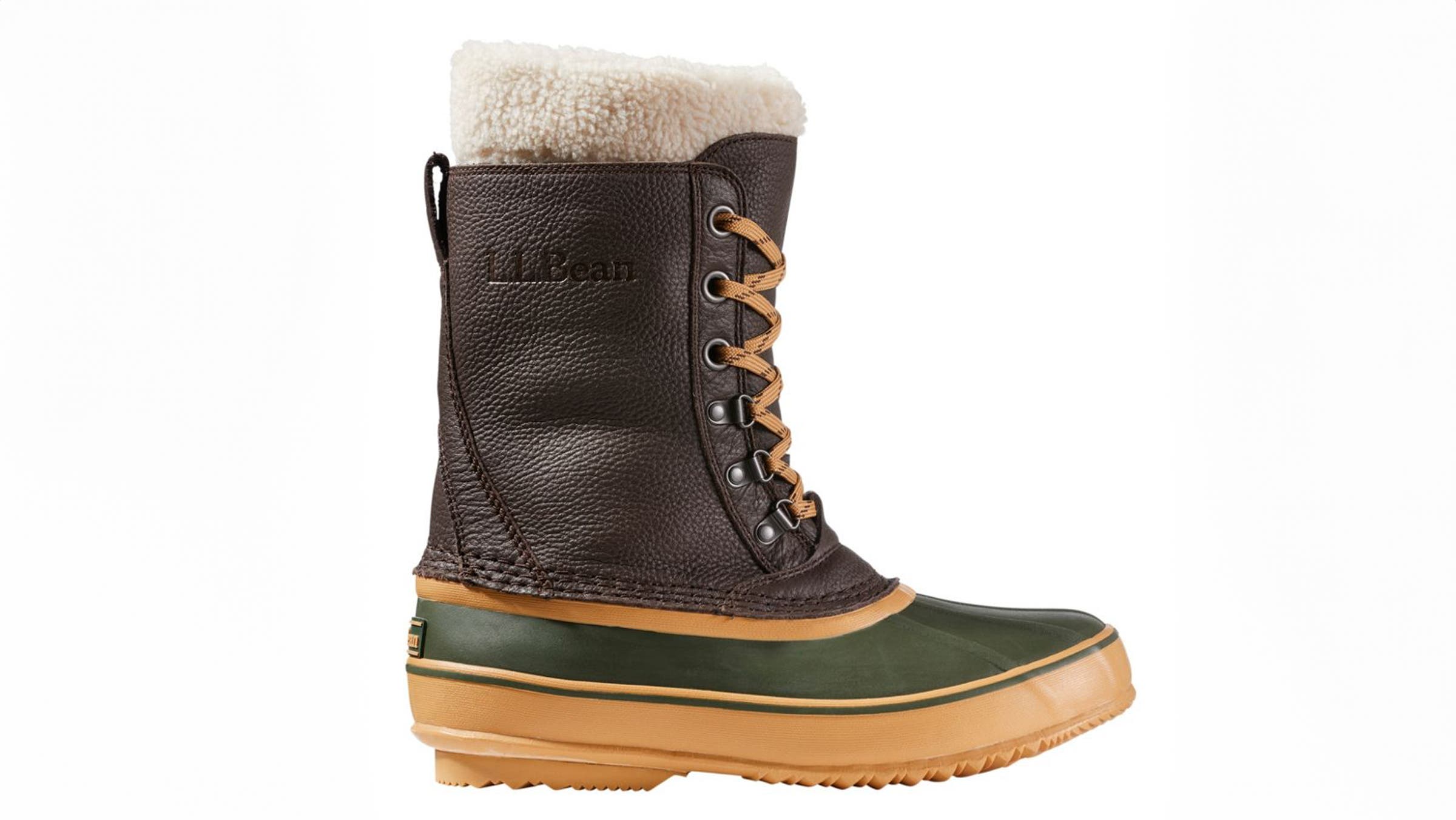
Best for Deep Snow
L.L. Bean Snow Boots
Size Range: 7-14 (men’s), 6-11 (women’s)
Pros and Cons
+ Cuff fits over snow pants
+ Fully gusseted tongue
+ Snow collar
+ Fits well out of the box
– Rubber outsole is a bit thin
– Not fully waterproof
The Snow Boot reminded testers of the winter boots they wore on snow days as kids: secured with a classic lace-up system, reliable at keeping snow from creeping down the calves, and warm as heck thanks to its faux-fleece felt lining. “These were not the most attractive boots, but among the more functional,” said one Santa Fe-based tester. “These came on a winter hike or two and were a favorite at the ski resort.” A generous, mid-calf boot opening has space to tuck ski pants into and makes for easy on-and-off. A rubber outsole with shallow treads did well in snow and slush, but didn’t provide much grip in slippery conditions. The waterproof rubber outer wraps around the entire foot, like a duck boot, while the leather uppers (the women’s version comes in suede) are durable and flexible.
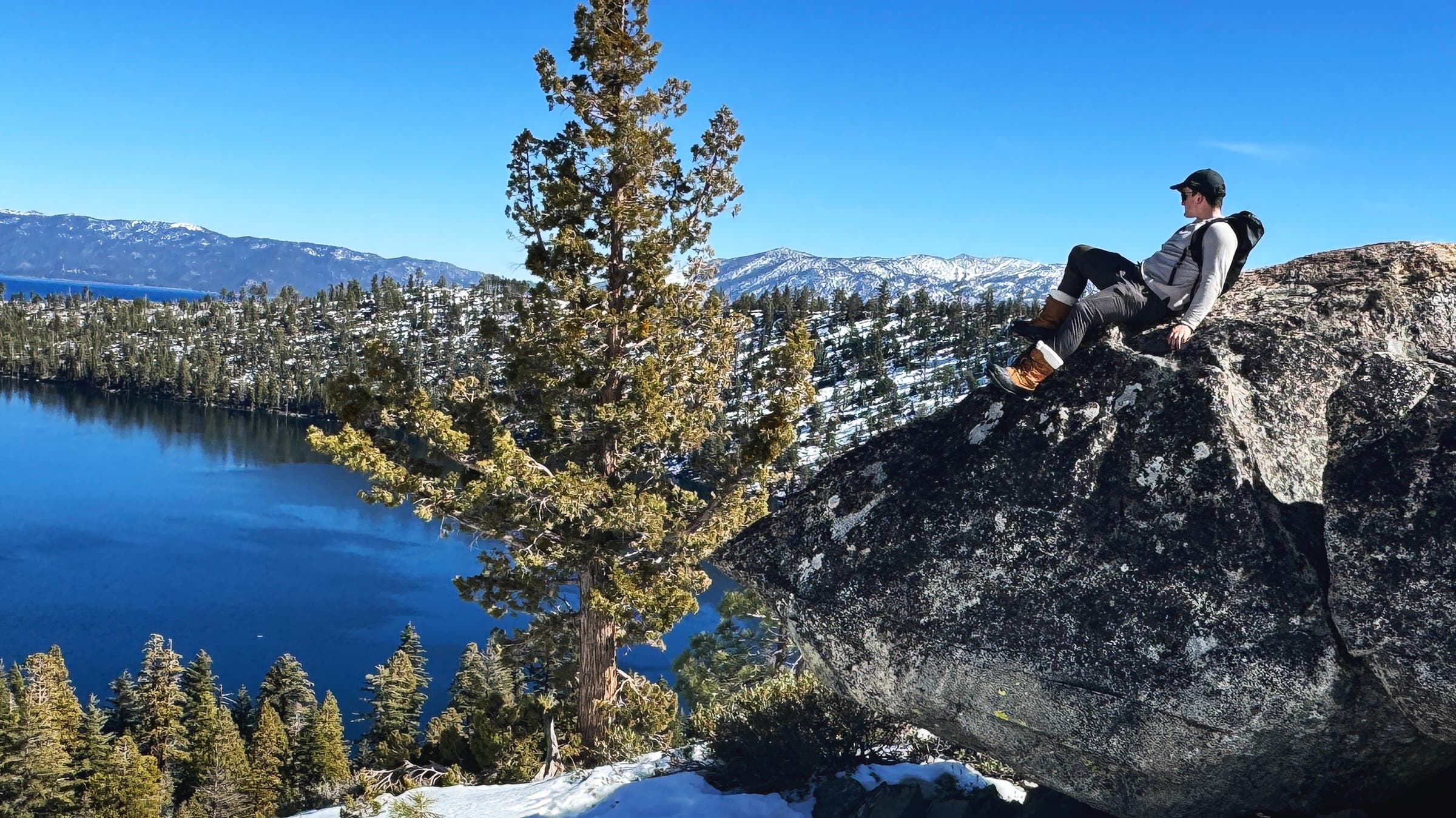
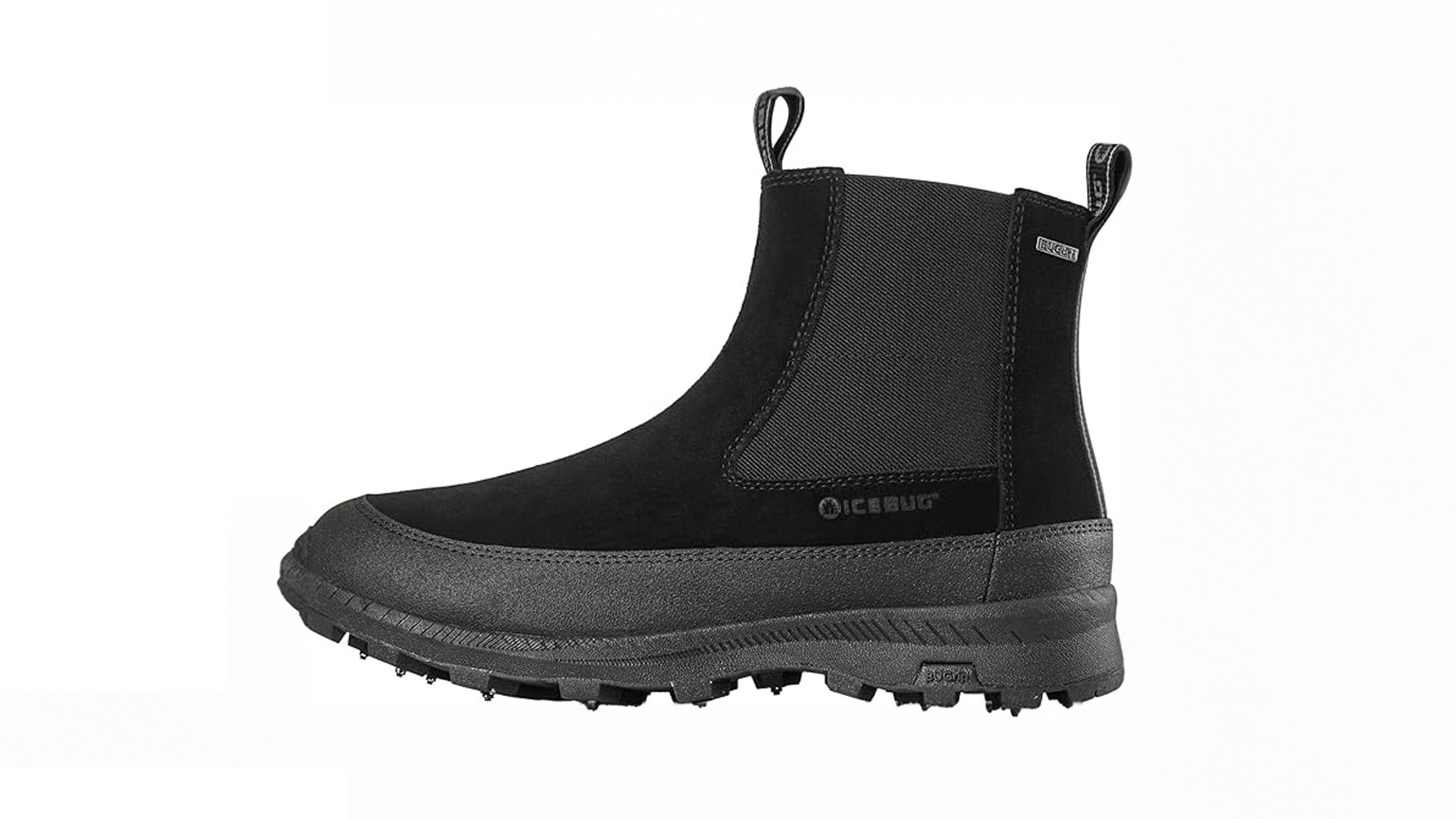
Best Ice Traction
Icebug Boda BUGrip
Size Range: 7-13 (Men’s), 5.5-10.5 (Women’s)
Pros and Cons
+ Excellent traction
+ Stylish
+ Waterproof
+ Easy to get on and off
– Unweidly and loud on ice-free surfaces
– Can’t wear indoors
Thanks to 17 carbide steel studs on the outsole, this stylish Chelsea is one of the only chic-looking winter boots on the market tailor-made for walking on solid ice. The studs dig into black ice and compact snow, making them ideal for perpetually-frozen parking lots, iced-over lakes, and windy, sleet-prone climates.
The Boda BUGrip is easy to get on and off with a side zipper and pull loop in the back. During a two-mile walk in 14-degree temperatures, one Duluth-based tester reported that the boots kept her feet warm and anchored to the ground, even on a steep, snow- and ice-covered trail. The suede upper and PU mudguard are fully waterproof, too—one tester waded into a river up to the boot’s zipper for several minutes and her socks stayed completely dry.
The main drawback for this winter boot is also its best selling point. While the studs give excellent grip in slick conditions, they will damage almost any flooring. And on ice-free outdoor surfaces like rock or pavement, they are unwieldy to walk in and make unpleasant clicking noises. Icebug does sell a rubber cover for the studs, but at that point, you might as well be using traction spikes.
Honorable Mentions
- L.L. Bean Storm Chaser ($149): These winter boots got solid points for style, convenience, warmth, and comfort. They were a top contender for a deep snow boot this year, but only come in a women’s version and don’t excel in one particular superlative.
- Danner Arctic 600 Size-Zip ($240-280): The Arctic 600 is an excellent winter hiking boot. It was comfortable out of the box, waterproof up to above the ankle, and has a grippy Vibram sole for ice or slippery snow. This is a great niche boot for short to medium-length day hikes ending at a brewery or pub, but is too burly and insulated for everyday use.
- Forsake Isla High ($140): While this winter boot has more of a style-forward design, it surprised us with performance too. The boot kept our feet warm even on sub-zero days and has a beefy outsole that fared well on ice. These duds would have taken the crown for most stylish women’s boot if it weren’t for two issues: the fit was a little narrow for most testers, and the tall lacing was a hassle.
- Meindl Solden Winter Pac Boot ($175): These beautifully-made classic winter boots are great for deep snow thanks to the tall, leather uppers. The boot was easy to slip into and out of, and burly enough for outdoor chores around the yard. We found the boot unnecessarily heavy and bulky for its warmth, however.
How to Choose a Winter Boot
If you expect to walk through lots of snow, look for a boot with a tall shaft measuring about eight or ten inches. A snow collar at the top is a bonus. For a more rainy winter climate, waterproofing details are key, whether rubber rands, neoprene liners, or good ol’ Gore-Tex. While “water-resistant” material may keep you dry enough for short periods in powdery snow, you need true waterproof membranes for wet conditions.
Avoid boots without fully gusseted tongues. Look to see if the tongue is attached directly to the upper from top to bottom. Also beware of perforations in the upper designed to make the boots more breathable—those holes could be a liability in deep water or snow.
When it comes to traction, look for widely spaced lugs on the outsole rather than wavy treads. For an example, look at the pattern on Vibram Arctic Grip soles. Note that no outsole can give you surefootedness on ice by itself; that’s what microspikes and studs are for.
Judging how comfortable a winter boot will be long-term is difficult at first glance, and pain points unique to your foot often won’t show up for the first few hours or days of wear. Unless you’re sure about the fit, don’t buy winter boots that can’t be returned after you’ve worn them a few times.
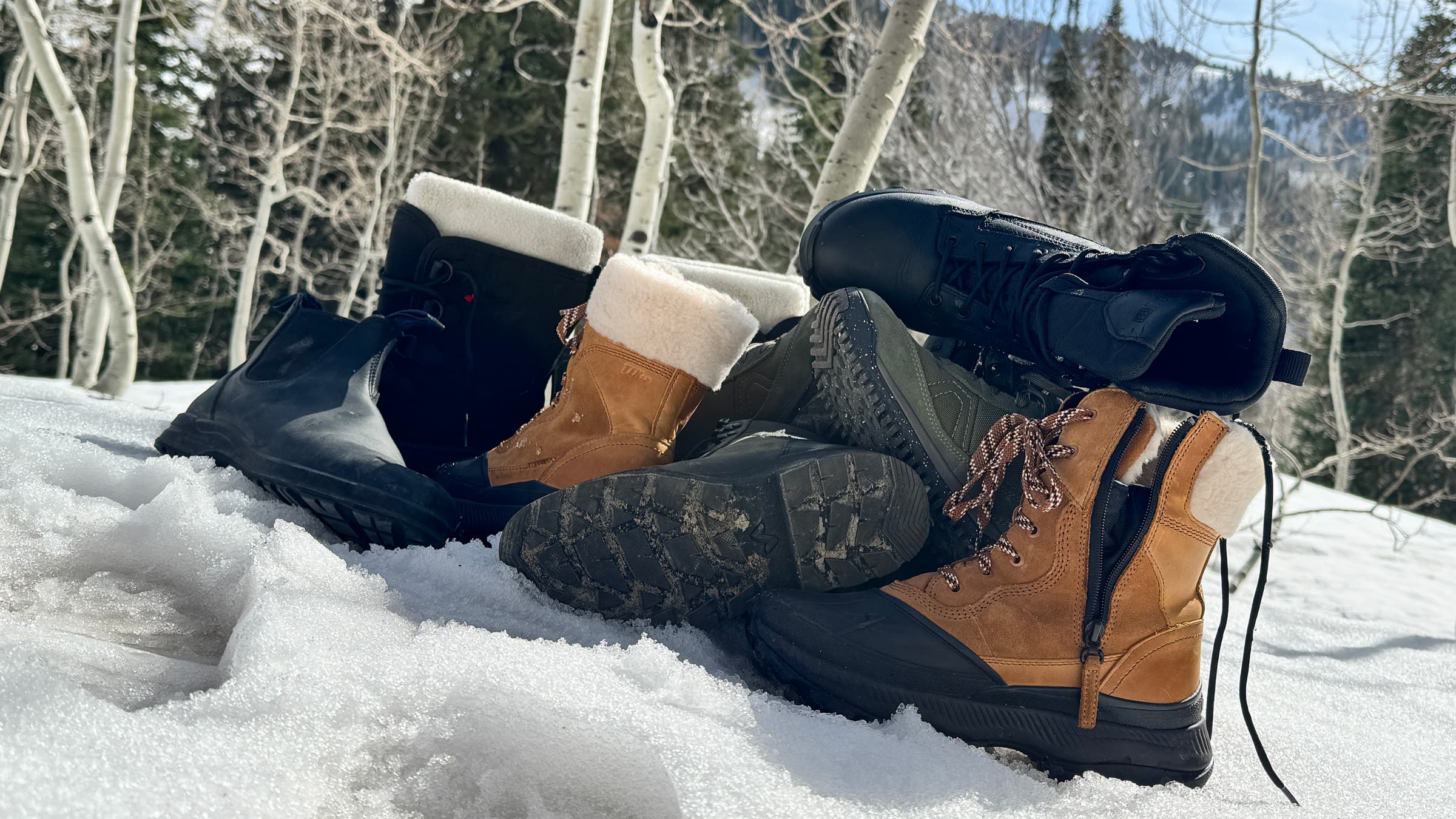
How We Test Winter Boots
- Products tested: 25
- Testers: 12
- Visits to ski resort parking lots: 220
- Miles walked in winter conditions: 825
- Coldest temperatures tested in: -16°F (Duluth, Minnesota)
- Longest distance traveled to test: Salt Lake City, Utah to Hokkaido, Japan
We began our process by taking inventory of the winter boots reviewed by lead testers Svati Kirsten Narula and Stephanie Pearson for previous editions of the Outside Winter Gear Guide. We stacked those boots up against the personal favorites of other testers, the latest and best winter boot releases, and popular picks from across the internet.
From January through April 2025, each tester rotated their test boots through regular winter activities: walking, driving, hiking, skiing, snowshoeing, schlepping kids to school, running errands, and outdoor chores. At the end of the testing period, each tester nominated their five favorite boots and assigned ratings for warmth, comfort, traction, and style on a scale of 1 to 5. From those lists and ratings, our category manager narrowed down and vetted the winners.
Meet Our Testers
Johanna Flashman, is a freelance writer, editor, and SEO strategist for the outdoor industry. She primarily lives and travels out of her converted RAM Promaster chasing all types of outdoor adventure from climbing to skiing to beer hiking. This winter and spring, she traveled to four different states and toured three different popular ski mountains testing winter boots.
Svati Kirsten Narula, a contributing editor at Outside and the digital editor of Dartmouth Alumni Magazine, is a writer and runner based in Santa Fe, New Mexico. When she’s not working, you’ll find her on the trails—often with one or all of her three dogs in tow.
Stephanie Pearson is a freelance writer for Outside and a former category manager for winter boots in the Outside Gear Guide. She lives in Duluth, Minnesota, where she grew up nordic skiing and shoveling lots of snow.
Other testers include:
Santa Fe, NM-based runner, skier, naturalist, and wildlife photographer Benjamin Shulman. Salt Lake City, UT-based mountain guides Brian Johnson and Ben Wu. Natalie Sheffield, a middle school teacher and outdoor educator based in Salt Lake City, UT. Beryl Weinshenker, a solar consultant and volunteer ski patroller outside of Portland, OR. Freelance outdoor writer and gear tester Erica Zazo.


